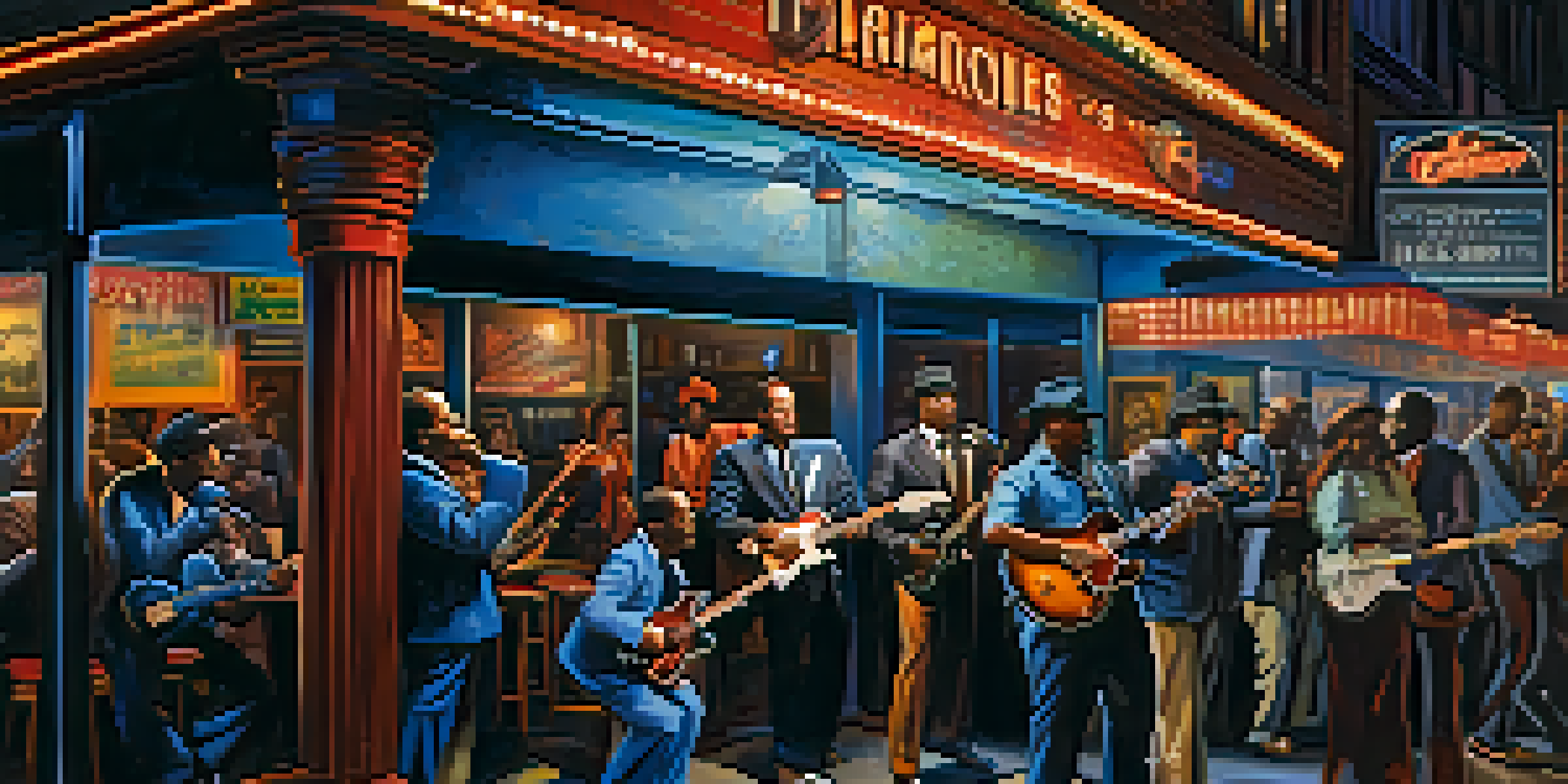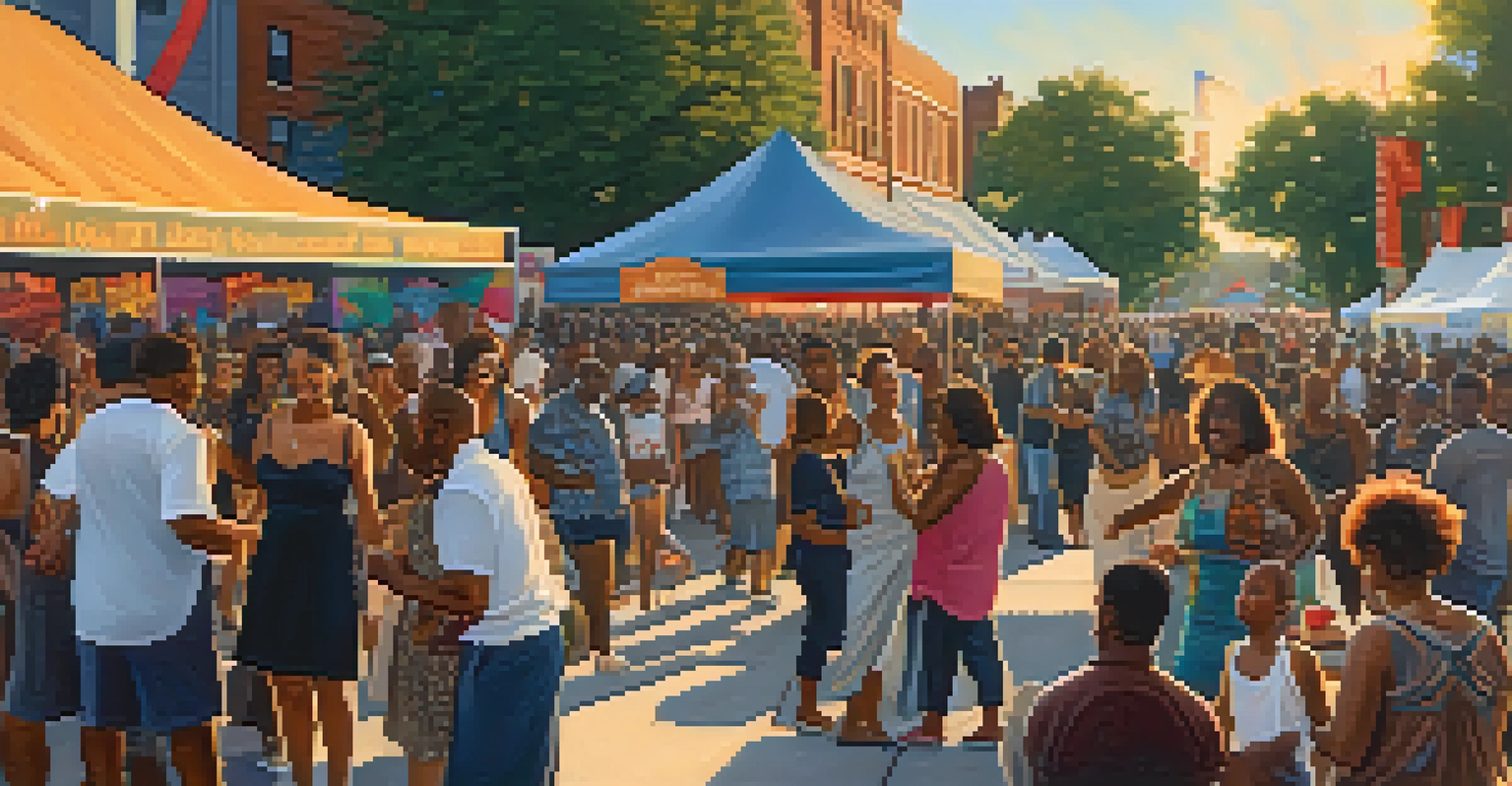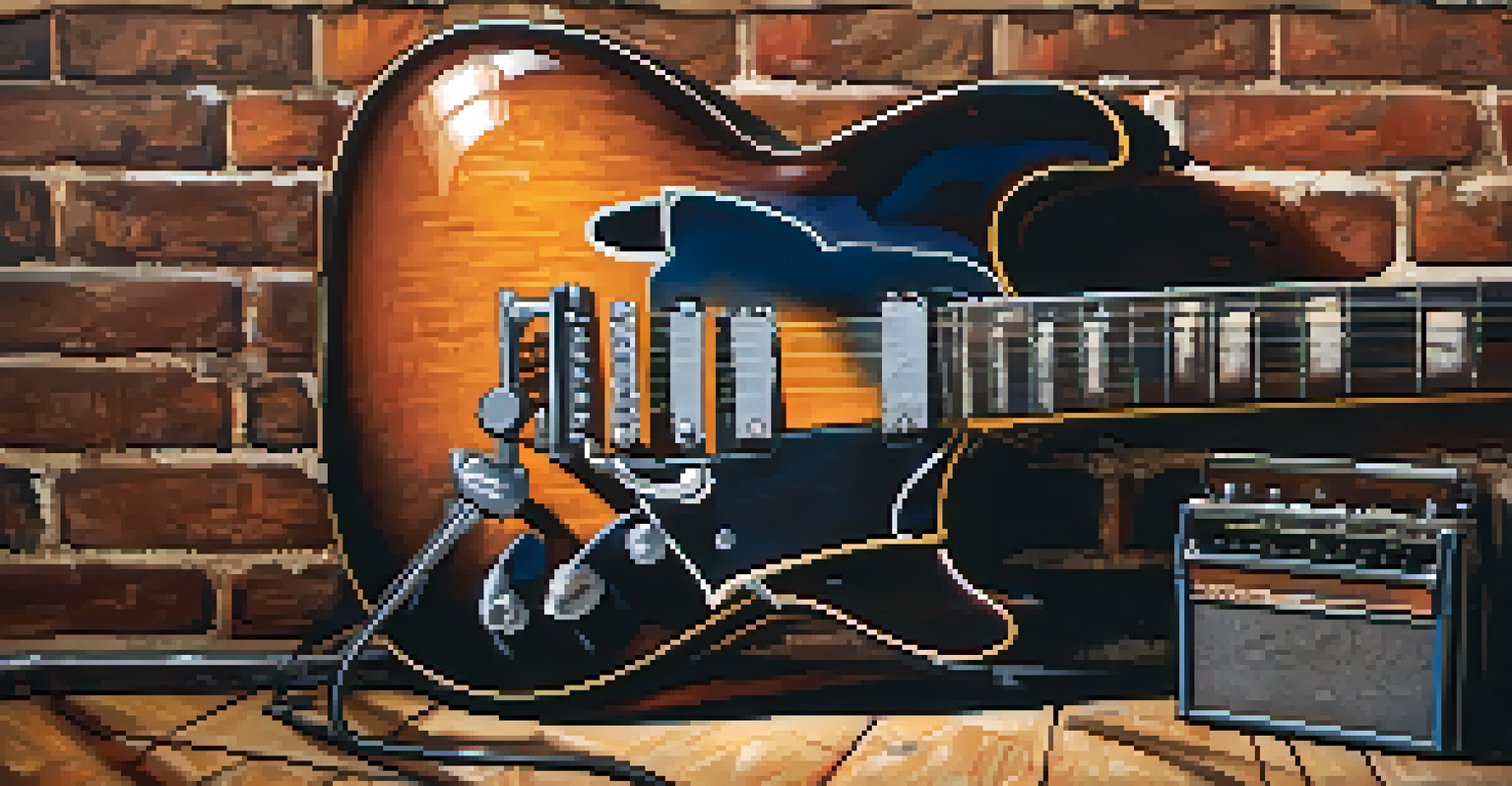Blues in Chicago: The City That Gave Birth to a Genre

The Roots of Blues: A Journey Through History
The blues genre has a rich and complex history, with its roots tracing back to the African American communities in the Deep South. Originating in the late 19th century, it was characterized by heartfelt lyrics and a distinct musical structure. As the genre evolved, it found its way to cities like Chicago, where it began to flourish in new and exciting ways.
The blues is a tonic for whatever ails you.
Chicago became a melting pot for musicians, many of whom migrated from the South during the Great Migration. They brought with them their stories, struggles, and musical traditions that were ripe for transformation. This blend of influences laid the groundwork for the unique Chicago blues sound that would emerge, combining traditional elements with urban innovations.
With the introduction of electric instruments and amplified sound, the blues in Chicago took on a more vibrant and energetic character. This evolution not only made it more accessible to larger audiences but also paved the way for the genre's growth in popularity, setting the stage for its lasting impact on music.
Key Artists Who Shaped Chicago Blues
When we think of Chicago blues, names like Muddy Waters, Howlin' Wolf, and Willie Dixon come to mind. These legendary artists didn't just perform; they transformed the genre, infusing it with their personal styles and experiences. Muddy Waters, often referred to as the 'father of modern Chicago blues,' is particularly notable for his electrifying guitar work and powerful vocals.

Howlin' Wolf, with his commanding presence and deep, gravelly voice, brought a raw energy to the stage that captivated audiences. His songs, filled with emotion and storytelling, resonated with many and contributed to the genre's enduring appeal. Meanwhile, Willie Dixon played a crucial role as a songwriter and producer, crafting timeless classics that became staples for countless musicians.
Chicago Blues: A Cultural Evolution
The Chicago blues genre evolved from African American roots in the Deep South, blending traditional styles with urban innovations.
These artists and others helped establish Chicago as a vital hub for blues music, influencing countless musicians across various genres. Their collective contributions not only shaped the sound of Chicago blues but also ensured its legacy would continue to inspire future generations.
The Birth of the Chicago Blues Sound
The Chicago blues sound is characterized by its electric guitar riffs, harmonica solos, and rhythmic intensity. This unique blend developed as musicians adapted their styles to fit the urban landscape, drawing inspiration from the bustling nightlife and vibrant culture of the city. The use of amplification allowed for a more powerful and dynamic sound that could fill larger venues.
Blues is a feeling. It's a way of life that speaks to your heart.
In the clubs and bars of the South Side, musicians would often engage in jam sessions that showcased their improvisational skills. This collaborative spirit not only fostered creativity but also helped to solidify the distinctive style of Chicago blues. The interplay between guitar, harmonica, and vocals created a rich tapestry of sound that is still celebrated today.
As the music gained popularity, it began to attract a diverse audience, drawing in both Black and white listeners. This cross-cultural appreciation played a significant role in the spread of the genre, helping to elevate Chicago blues to national prominence and allowing it to influence rock and roll and other musical styles.
The Role of Chicago Clubs in Blues History
Chicago's vibrant club scene has been instrumental in the evolution of the blues genre. Venues like the Kingston Mines and Buddy Guy’s Legends became famous hotspots where artists could showcase their talents. These clubs provided not only a stage for established musicians but also a platform for emerging talent, creating a thriving ecosystem of creativity.
The intimate atmosphere of these venues allowed for close interaction between performers and audiences, fostering a sense of community. Fans would come to hear their favorite artists while also discovering new sounds and styles. This dynamic environment contributed significantly to the authenticity and raw energy that defines Chicago blues.
Influential Artists Shaping Blues
Legendary artists like Muddy Waters and Howlin' Wolf transformed Chicago blues with their unique styles and powerful performances.
Over the years, these clubs have hosted countless legendary performances, helping to solidify Chicago's reputation as the home of the blues. Even today, they continue to attract music lovers from around the world, ensuring that the spirit of Chicago blues lives on for future generations.
Chicago Blues and Its Cultural Impact
The impact of Chicago blues extends far beyond music; it has shaped the cultural landscape of the city itself. The genre served as a powerful form of expression for African Americans, addressing themes of hardship, love, and resilience. Through their music, artists captured the essence of their experiences, creating a powerful narrative that resonated with many.
As blues music spread, it began to influence other genres, including rock and roll, jazz, and rhythm and blues. Artists like Eric Clapton and the Rolling Stones drew inspiration from Chicago blues, helping to introduce the genre to new audiences around the globe. This cross-pollination of musical styles has led to a rich tapestry of influences that continue to thrive today.
Moreover, Chicago blues has become a symbol of the city’s identity, representing its history, struggles, and triumphs. It celebrates the resilience of its people and serves as a reminder of the power of music to unite and inspire, ensuring that the legacy of blues music remains firmly rooted in the heart of Chicago.
Festivals Celebrating Chicago Blues
Chicago is home to several renowned festivals that celebrate the blues, drawing music lovers from all over the world. One of the most notable is the Chicago Blues Festival, which has been held annually since 1984. This free event showcases an impressive lineup of both legendary and emerging artists, providing a platform for the rich diversity of Chicago blues.
In addition to live performances, these festivals often feature workshops, discussions, and art exhibits that delve deeper into the history and significance of the genre. Such events foster a sense of community among attendees, creating lasting connections through a shared love of music. It’s a joyous celebration that highlights the culture and spirit of blues.
Festivals Preserve Blues Heritage
Chicago hosts various festivals that celebrate blues music, fostering community and ensuring the genre's legacy continues for future generations.
Moreover, these festivals serve as a reminder of the genre’s enduring legacy, ensuring that new generations continue to appreciate and engage with Chicago blues. They play a crucial role in keeping the music alive and relevant, allowing the stories and sounds of the past to resonate in the present.
Preserving the Legacy of Chicago Blues
Preserving the legacy of Chicago blues is essential for maintaining its cultural significance. Various organizations and museums, such as the Chicago Blues Museum, are dedicated to celebrating and educating the public about the genre's history. These institutions work tirelessly to document the stories of artists and the evolution of blues music in the city.
In addition to museums, local musicians and music schools are actively involved in keeping the spirit of Chicago blues alive. Through workshops, jam sessions, and performances, they help nurture the next generation of blues artists, ensuring that the music continues to thrive. This grassroots effort is vital in passing down the traditions and techniques that define the genre.

Moreover, the rise of digital platforms and social media has made it easier for blues artists to reach wider audiences. Streaming services and online performances allow fans to discover new talent and connect with the rich history of Chicago blues. This blend of tradition and modernity ensures that the genre remains relevant and influential in today's musical landscape.